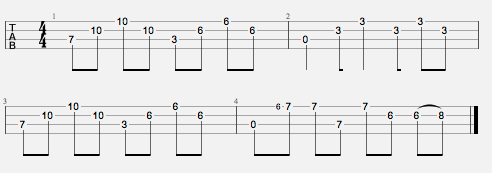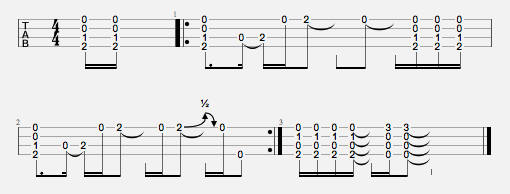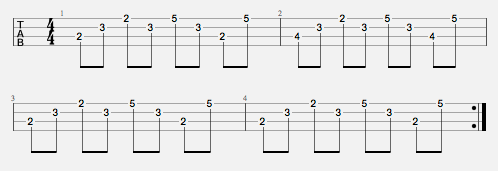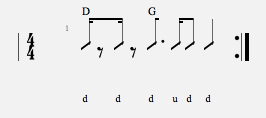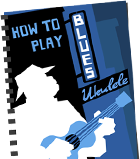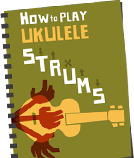Time for a little blogcation. I’ll be back on Friday 20th May. Expect some posts dedicated to music from Manchester (put your requests in the comments), game music from Portal 2 and Angry Birds, and some shameless whoring of my upcoming actual-paper book.
This week’s videos include O’Death doing a track from their new album, blues growling from Hal and the Baron, Janne Saar (Estonia’s Britney Spears) and plenty more good-timing action besides.
New ukulele releases: Ukulollo’s Completely Unbroken (you can get MP3s here – The Beat of the Strum is essential), UOGB’s Still Live (essentials: Hot Lips and Good Sculptures), Howlin’ Hobbit’s Taking the Plunge. And Nellie McKay has an EP available for free. On the way: Aaron Keim’s Quiet American II.
Zach Condon will be releasing a new album in the summer and he has a new outlook on the uke, “this year I buckled down. It’s an interesting instrument. My trouble was taking it seriously myself.”
Bossa is doing her Uke Hunt podcast inspiring ukulele show for Chorlton Arts Radio. So if you want to be involved hit her up.
Uke of Carl has been putting up plenty of TV theme tabs including Dallas, Black Adder and Family Guy.
Ralph Shaw discusses how to be a sensitve banjo-uker.
The Hitachi contest/boob entry hullabaloo continues with the owner of the boobs saying, “I would have expected better from the people at Uruti School who should be teaching their eight students good sportsmanship, not hate.”
Photos: Final image, Me and My Uke, adorable, Prince Charles forgets his ukulele.
Excellent news on the Eddie Vedder front. Not only is the new video out but there’s a a ukulele songbook on the way (thanks to Ric Jo for the info). Which means I don’t have to bother tabbing it up. Instead, I can transfer a few grunge riffs to uke.
The usual riff rules apply: they’re not necesarrily in the same key as the original and all requests for the rest of the song will be pelted with cabbage, tied to a donkey and driven out of town.
Soundgarden – Spoonman
With all the focus on Nirvana and Pearl Jam, Soundgarden got a bit overlooked. I think they were as good as either of them. This riff is easily one of the best that came out of the scene. I’ve adjusted it a lot for the uke, giving it a C chord drone. It’s also two frets lower than the original (unless you’re using D-tuning or have a capo on the second fret).
The time signature for the main riff is, frankly, I have no idea. I went and looked around at other people’s tabs and they seem to have copped out a bit too. So I just did the same.
The verse riff is similar to the opening riff:
And the chorus riff is a bit like this:
All together they sound like this:
Nirvana – Heart Shaped Box
I’ve moved the riffs in this song down a fret to make it more ukeable. Otherwise it sounds pretty good on uke.
The chorus riff, being all distorted, doesn’t transfer quite so well. But it’s still playable. The open A-string here is optional – I added because I like how nasty it sounds.
Pearl Jam – Alive
This fits pretty well on the ukulele in the original key.
Here’s the uke version:
Temple of the Dog – Hunger Strike
Little known fact: my name when I was born was Andrew Wood like the guy from Underworld and the guy from Mother Love Bone (who inspired this song). Then my name was changed so I shared it with the leader of a ceilidh band and all hopes of rock and roll stardom were dashed before I was a week old.
This one is in the original key.
Alice In Chains – Them Bones
Another one in the original key and another one with an awkward time signature. But once you’ve got the hang of that it’s fairly easy to play.
More Grunge Riffs
Nirvana – Come As You Are
Pearl Jam – Jeremy
Nirvana
– Smells Like Teen Spirit
Pearl Jam – Can’t Keep
The April 2011 edition of the Uke Hunt podcast features flamenco ukulele from Herman Vandercauter, drizzly jazz from Patsy Monteleone, folktronica from Substitute Sandwiches and plenty more besides.
If you want to submit your stuff or – if you can get to Manchester – set up a session, you can find us on Soundcloud, or on Facebook, or email podcast@ukulelehunt.com
Subscribe on iTunes
Subscribe via RSS
All the Uke Hunt Podcasts are here.
Playlist:
1. Nicholas Abersold – Those Punk Rock Days
2. Herman Vandecauter – Andaluzukulele
3. Patsy Monteleone – April Showers
4. Jessica Delfino – Chinatown
Follow Jessica on Twitter.
5. The Corner Laughers – Inner Archaeologist
6. Jake Wildwood – Amateur Night Five Dollars
7. Substitute Sandwiches – Criss-Cross Celluloid
8. Uke Punk – Mister, Mister
9. The Spiraltones – Lost Weekend
Garfunkel and Oates – Weed Card (Chords)
At the end of last year, Kate Micucci was the recipient of AV Club’s “She’s Everywhere” Award. With any luck, she’s going to be even more everywhere this year because Garfunkel and Oates have signed up with HBO to make a pilot (amid much talk of them filling the Flight of the Conchords role). If it ever makes it to a series – and I’m informed by an industry insider that G&O fit nicely with where HBO are going – I’m sure this one will be slotted in there.
Quick note on the chords: on the first G in the chorus, the uke plays G but the guitar plays G then F# in the bass. If you want to recreate that on the uke, slip in a Gmaj7 after the G.
Suggested Strumming
INTRO
For the intro:
This strum is also used at the end of the chorus and the end of each section of the verses. Slowed down, it sounds like this.
VERSE
In the verse, start out with:
d u x
For the first D chord, then move on to:
u d u x
Put together and slowed down, they sound like this:
On the A chord you can go wild with d u d u…. Until you get back to the intro strum.
CHORUS
For the chorus, one of these for each chord in the first two lines:
d – d u
Then a d – x on the Bm and on the F#m:
u – u d –
Together those two go like this:
BRIDGE
And in the bridge section, you can do just up-strums on the off beats for the Dm chord. And a single down-strum each for E and F.
More Micucci
Garfunkel and Oates – Me, You and Steve (Chords)
Garfunkel and Oates – Present Face (Chords and Tab)
Garfunkel and Oates – Year End Letter (Chords)
Kate Micucci & Ted (Scrubs) – Screw You (Tab & Chords)
Kate Micucci & William H Macy – It’s Time to Get Laid (Chords)
Kate Micucci – Let Us Be Happy Together (Chords)
Kate Micucci/The Gooch – Mr Moon (Chords)
A genre hopping week this week with soul from Celisse Henderson, backwoods punk from the Denver City Saltlicks (and check out their badass diddley bow riffing) and reggae from Tribal Theory along with the usual bits of instrumental wizardry and girls with jazzy voices.
If you’re looking for some non-uke action, take a listen to some Malawian diddley bow action and Wu Man playing the 4-string Chinese pipa.
Local Registrar on Barack Obama’s birth certificate was one ‘U K L Lee’.
New live album from the UOGB on the way: Still Live. Tracks include new tour hits like Hot Lips and Good Sculptures and new versions of old favourites like Le Freak and Monster. Full track list on UOGB Frog Fans.
MP3s: New Re-entrants album available on CDBaby and iTunes, Jake Wildwood has a new instrumental record for free download, Thea Gilmore does a uke cover of John Wesley Harding on her new Dylan cover album.
The Hitachi Ukulele contest shambles I mentioned last week is rolling on. After complaints from schools they will look at the sites sending traffic and, “if we deem those sites to be inappropriate or unacceptable within the spirit of the competition then they will be disqualified.” I’m not sure how people are supposed to control which sites link to them. Or if it’s legal to change contest rules after they’ve finished in Australia.
She Geek does a ukulele song for Portal 2 (I still haven’t finished it).
It’s the big day tomorrow. Prince William finally makes Ken Middleton his bride. He’s always been royalty in our eyes.
As luck would have it, the Cabral machete method that I’ve been covering has two tunes appropriate to the occasion (read Part 1 and Part 2 of the series if you’ve no idea what I’m on about). Quite why a Madeiran machete method would dedicate two tunes to UK anthems I’m not sure.
Both these pieces are written for machete tuning DGBD (an octave above the baritone and with a low-D string and the E-string tuned down to D). But both of them sound great played with a standard ukulele with the A-string tuned down to G (so it’s the same pitch as the g-string).
God Save the Queen
God Save the Queen (Tab)
As an atheist, republican with no desire to crush the Scottish, I have problems with this being the national anthem. I’d much prefer a song with a sentiment everyone can get behind like this one.
One thing I’m unsure of in this tab: the second chord in bar 3. I’m pretty sure I’ve written it up correctly but it sounds very discordant. Even more so in re-entrant tuning. Play it with an, “I know it sounds like shit and I don’t care,” attitude and you’ll get away with it (or pretty much anything).
Here it is played on a standard- uke tuned gCEG:
Rule Britannia
Rule Britannia (Tab)
In Manuel Morais‘s Colecção de Peças para Machete (well worth buying if you’re interested in this stuff) he says that an open bracket shape in the standard notation indicates that the chord is strummed down with the thumb. Which is the way I’ve written it up. But I didn’t play it that way. To play bar 16 that way is going to require some very nifty thumb work. Instead I went the easy way and used my fingers to pluck all the notes. Not authentic, but neither is playing it on a ukulele. Here’s the result:

These pieces with arrangements by Manuel Joaquim Monteiro Cabral; and tab and audio by http://ukulelehunt.com are licensed under a Creative Commons Attribution 3.0 Unported License.
In what was intended to be a very straight-forward tab for Crazy, I couldn’t resist throwing in a few bent notes in bar 21. I’ve had a couple of people struggle with it so I thought I’d put up a brief post about bending.
The Basic Idea
You bend a string by pushing it upwards (for the E- and A-strings) or pulling it down (g and C) whilst staying at the same fret. This raises the pitch of the note. It looks like this:
Technically, you should bend the note up one fret’s worth where the tab has ‘1/2’ at the top and two frets worth where there is a ‘1’. However, nylon strings don’t take to bend as kindly as steel strings so you’re doing very well if you can accurately get a two step bend. I usually use bends on the uke to transition smoothly between two notes. Using it like a slide except it allows for a slower and more smooth transition.
A Couple of Tips
Finger Support: Use your ring finger to bend have your middle and index fingers behind it so you get extra bending power. In the example above, I needed my index finger to play the next note so I’m only using my middle as back-up.
Thumb Positioning: Bring your thumb over the top of the neck. That gives you much more squeezing power and it can also be used to stop the g- and C-strings from sounding – which they can do as your bend will rub up against them.
Use It
Patsy Cline/Willie Nelson – Crazy
WIUO – The Israelites
B-52s – Love Shack
Wayne Federman – Electric Ukulele Medley
Brian Hefferan – Mama Bear Bounce




